Growing roses is not easy. These are pretty capricious flowers, with their whims. Without proper care, it will not be possible to grow even a small rose bush, not to mention a rose plantation. But if you take good care of the garden queen, she will thank for the abundance of luxurious flowers with a wonderful aroma. One of the main points in the care of roses is timely feeding.
Article layout
Top dressing of roses when landing
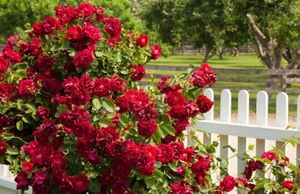 First you need to prepare the land at the landing site. Roses like a little acidified soil, this should be considered when developing a plot for planting. To make the rose cozy at the chosen place, you can use the following composition:
First you need to prepare the land at the landing site. Roses like a little acidified soil, this should be considered when developing a plot for planting. To make the rose cozy at the chosen place, you can use the following composition:
- mature humus or mullein - five-liter bucket;
- high peat - five-liter bucket;
- river sand - a five-liter bucket;
- well dried and crushed yellow clay - a five-liter bucket;
- granulated superphosphate - two matchboxes.
You can simply decompose all the components in a place intended for a rosebush and dig up the soil. And you can add here garden soil (10-liter bucket), mix thoroughly until smooth and make a high bed on a place previously cleared of grass.
There is also a third, more economical, landing option: a landing pit. Pour all the ingredients into a previously dug hole, mix right in the hole and cover with a small layer of soil.
 The best time to plant a rose in the place prepared in advance is spring, after the warm weather is established and the ground warms up. During the summer period, the plant will take root well, take root and accumulate strength before winter. In the fall, planting roses is undesirable - they simply do not have time to form and develop their root system before the cold weather.
The best time to plant a rose in the place prepared in advance is spring, after the warm weather is established and the ground warms up. During the summer period, the plant will take root well, take root and accumulate strength before winter. In the fall, planting roses is undesirable - they simply do not have time to form and develop their root system before the cold weather.
If the planting pit or garden bed was filled correctly, then in the first year after planting the root dressing is not needed for the rose. Young plants can be fed a little on a sheet, and in the fall, to prepare a pink bush for the upcoming winter, you need to hold.
Mineral fertilizers for roses
After choosing a suitable place for planting roses, it's time to find the right fertilizer for it and figure out which substances, which fertilizers, and for what. All gardeners know that there are two types of fertilizers - and two ways to apply them - root and foliar.
Root dressing
In order for the rose to grow and smell fragrant, you need to understand what substances and for what it needs.
Nitrogen
Nitrogen increases the number of shoots, creating a lush "hair" from the foliage. When the bush begins to grow intensively, the rose begins to consume large amounts of nitrogen with pleasure. This substance enters the soil with or.
 When is the most active growth of new shoots? From spring to mid-summer. This time is the best for nitrogen supplements. Later, autumn, nitrogen fertilization will cause the growth of new shoots at the wrong time. In order for the plant to endure good wintering, its shoots must be fully matured, and those grown in the second half of summer and closer to the autumn will go completely unripe under the snow, which will lead them to inevitable death in winter frosts. Even if you hide them, to warm - will not help.
When is the most active growth of new shoots? From spring to mid-summer. This time is the best for nitrogen supplements. Later, autumn, nitrogen fertilization will cause the growth of new shoots at the wrong time. In order for the plant to endure good wintering, its shoots must be fully matured, and those grown in the second half of summer and closer to the autumn will go completely unripe under the snow, which will lead them to inevitable death in winter frosts. Even if you hide them, to warm - will not help.
Under the shelter must create moisture, accordingly, the process of decay, vypryvaniya, will begin, it can affect the vital activity of the entire bush.
Excess nitrogen gives rose a rapid development, but there will be a delay in flowering. The number of flowers will decrease, the rose will begin to “fatten”, and this is a direct path to the fungal disease.
Most of the nitrogen contains young leaflets and shoots, their juiciness stimulates the aphid's appetite, so the fat, nitrogen-over-grown roses are simply stuck to the aphids.
What to do with fat stems and how to identify them? They are determined by the length and thickness, which are much more than the average. The plant gives such shoots a lot of power, although they do not want to branch and bloom. If by the beginning of July a flower did not appear on this one-year-old shoot, it should be cut by a third.
Phosphorus
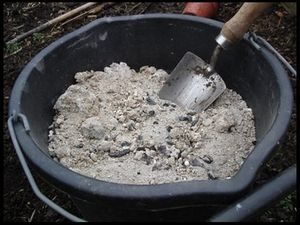 Roses have a vital need for phosphorus, as it helps to form peduncles and flower buds, develops flowers and a stem, and it depends on phosphorus how many flowers there will be on a bush. But the most important thing is the ability of phosphorus to accelerate the development of a plant. How does this happen?
Roses have a vital need for phosphorus, as it helps to form peduncles and flower buds, develops flowers and a stem, and it depends on phosphorus how many flowers there will be on a bush. But the most important thing is the ability of phosphorus to accelerate the development of a plant. How does this happen?
Thanks to phosphorus, the soluble carbohydrates that make up the cell sap increase their quantity, thereby ensuring the maturation of the shoots and, consequently, lowering the freezing point. This is what contributes to the favorable wintering of the rose bush. But it must be borne in mind that phosphorus without potassium is absolutely useless.
Potassium
The lack of potassium is reflected in the rose by the occurrence of diseases. To avoid this, a phosphate-potassium fertilizer is required - on a bucket of water 100 grams and 30 grams.
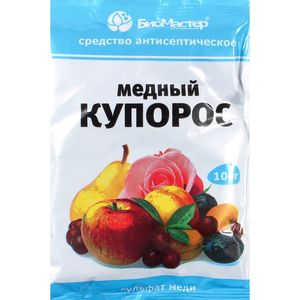 In addition, phosphorus affects the retention of water in the cells of the plant, and the summer heat of the rose is more easily tolerated. If the plants are fed in time with potassium and phosphorus, they will thank for abundant flowering and increased brightness of the flowers. It is best to start this dressing during the formation of buds.
In addition, phosphorus affects the retention of water in the cells of the plant, and the summer heat of the rose is more easily tolerated. If the plants are fed in time with potassium and phosphorus, they will thank for abundant flowering and increased brightness of the flowers. It is best to start this dressing during the formation of buds.
As well as phosphorus, potassium helps the wood mature. This is due to the increase in protein and carbohydrates. Interestingly, the movement of sugars from leaflets to other parts of the rose is enhanced.
Miracle Sugar
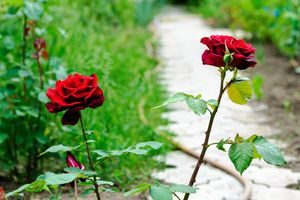 What is this wonderful sugar? As is known, in the cell sap, in addition to all sorts of elements, there is water. What happens when the temperature is below zero? Crystallization of frozen cellular water. By the way, it is for this reason that garden plants often die, to put it simply, they just freeze out. And the sugars present affect the formation of ice inside the plant, reducing its amount.
What is this wonderful sugar? As is known, in the cell sap, in addition to all sorts of elements, there is water. What happens when the temperature is below zero? Crystallization of frozen cellular water. By the way, it is for this reason that garden plants often die, to put it simply, they just freeze out. And the sugars present affect the formation of ice inside the plant, reducing its amount.
That is why gardeners with experience in the cultivation of roses, with the onset of autumn, always cover up rose bushes when it rains. This is done so that the roses do not absorb excess moisture. Plus, the sugar will make the protoplasm more viscous, and the amount of water in the cells will decrease, respectively, and the ice in them will also be formed less.
Roses that are “overfed” with potassium begin to fatten, bloom later than usual., and unblown buds simply rot.
Most often for potash supplement use, potassium sulphate,. But the use of potassium chloride is not desirable, although in this fertilizer potassium contains a lot.
This dressing also contains chlorine, and it acts depressing on roses. It is better to use potassium sulfate or potassium magnesia. To make the right solution, you will need: potassium sulfate - 30 g, bucket water; or kalimagneziya - 1 tbsp., water - a bucket.
Use of dry mineral dressings
Mineral dressings can be not only in liquid form, they can be applied dry as well, having previously plentifully watered the ground under a rosebush. Fertilizers should not be added to the very center of the bush; they should be laid out around the stems, stepping back 10-15 cm from them, and then the soil should be shed well again.
Roses growing on clay soil do not require frequent fertilizing, since the nutrients in this soil linger for a longer period than in the sand. In a rainy summer, plants need more frequent supplements with an increased dose of mineral fertilizers. When the period of active flowering comes, feeding should be stopped.
Foliar top dressing
![]() Feeding with microelements does not need to be carried out often, a couple of times over the summer will be enough. The greatest effect gives foliar feeding. It is very suitable for weakened plants, especially in cold weather.when the root dressing is absorbed by the rose badly. During spraying, the leaves should be completely wetted on both sides. This dressing is best done in the evening, or when it is overcast, but there is no rain.
Feeding with microelements does not need to be carried out often, a couple of times over the summer will be enough. The greatest effect gives foliar feeding. It is very suitable for weakened plants, especially in cold weather.when the root dressing is absorbed by the rose badly. During spraying, the leaves should be completely wetted on both sides. This dressing is best done in the evening, or when it is overcast, but there is no rain.
For foliar top dressing, only a freshly prepared solution is suitable. In contrast to the mineral fertilizers in these dressings, the salt content is much lower, which has a beneficial effect on the soil, since it is not salinized; soil microorganisms and earthworms are also not adversely affected.
To make foliar application, the evening is usually chosen, then the droplets with fertilizer will linger on the leaves longer. Wet, cold weather with strong evening dew is not suitable for this procedure.
Extra root dressing of street roses can be performed using complex liquid fertilizer for room roses. It contains not only essential nutrients, but also all important micronutrients.
Organic plus mineral water - great effect
Great importance in dressing roses attached to the team, which is usually made in the spring. If organic and mineral fertilizers are used together, the effect is amazing!
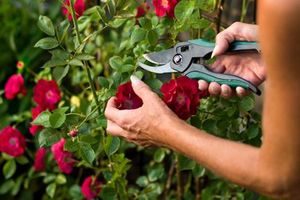 The question may arise: what is better - organic or mineral water? The answer is obvious: organic is more useful.
The question may arise: what is better - organic or mineral water? The answer is obvious: organic is more useful.
Explanation: when increased doses of mineral fertilizers are applied, soil salinization occurs, strong salt solutions begin to inhibit the root system of the rose bush and prevent it from developing properly. Organics for better decomposition requires some compounds found in mineral fertilizers. By absorbing these compounds and at the same time decomposing, it provides plants with all the necessary nutrition, at the same time improving the structure and properties of the soil.
The main thing - do not overdo it with mineral fertilizers, in all you need a sense of proportion. By the way, there is also a great benefit from them - the rate of action on a plant in mineral water is higher than that of organic matter. Therefore, the correct symbiosis of mineral and organic fertilizers in the nutrition of the rose bush is so important.
Organic fertilizers include:
- mature compost;
- etc.
Roses are very responsive to making organic. But with fresh manure, caution is required, in principle, it is better not to use it at all, since the roots of roses can not withstand the high temperature during the decomposition of fresh manure and simply burn. It is best to use rotted manure or humus.
Recipes organic dressing for roses
Infusion from bird droppings
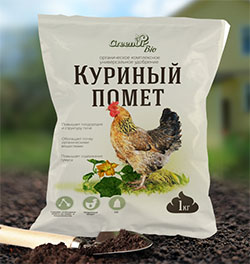 Dry bird droppings (1 part) pour water (20 parts), insist for a week. Stir well before use, take one part of the solution and add it to three parts of water.
Dry bird droppings (1 part) pour water (20 parts), insist for a week. Stir well before use, take one part of the solution and add it to three parts of water.
Under each pink bush pour three liters of fertilizer. You can scatter 0.2 kg of dry litter per square meter of soil, then be sure to water thoroughly.
Wood ash infusion
Wood ash (0.2 kg) brew three liters of boiling water, to insist during the day, do not forget to stir. Drain the transparent part of the infusion, drain and add up to ten liters. The remaining residue in the case does not go.
This infusion is foliar top dressing on the sheet. Wood ash can also be used dry. In this case, 0.0.3 kg of sifted dry ash should be embedded in the soil under a rose bush.
Infusion of manure
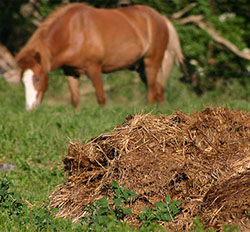 The use of fresh manure is not recommended, only fermented infusion. Fresh manure (1 part) pour 8-10 parts of water, stirring constantly, insist for a week until fermenting. Since there is a lot of nitrogen in the manure, it does not hurt to add phosphoric and potash fertilizers to the solution. Dilute with water (1: 1) before feeding. Under each bush pour three liters of fertilizer. This fertilizer is also suitable as foliar application.
The use of fresh manure is not recommended, only fermented infusion. Fresh manure (1 part) pour 8-10 parts of water, stirring constantly, insist for a week until fermenting. Since there is a lot of nitrogen in the manure, it does not hurt to add phosphoric and potash fertilizers to the solution. Dilute with water (1: 1) before feeding. Under each bush pour three liters of fertilizer. This fertilizer is also suitable as foliar application.
Dead manure
They can mulch the soil under a rose bush. And you can make it as a fertilizer after pruning roses in the spring (pour a roller with a diameter of 7-10 cm around the stalks so that there is no contact with the shoots).
Infusion of herbs
 If you have problems with manure, you can make an excellent organic fertilizer from ordinary grass. In a ten-liter container fill the grass, it is better if it is chopped nettle. Tamp tightly to keep one-third of the tank free. Add 0.1 kg of superphosphate or urea, a glass of wood ash, pour water to full, leave to infuse for 7 days in a warm place (you can in the sun). For root dressing, take 1 part of the infusion to 10 parts of water, for the extra root - extract the infusion and dilute it in a ratio of 0.5: 10.
If you have problems with manure, you can make an excellent organic fertilizer from ordinary grass. In a ten-liter container fill the grass, it is better if it is chopped nettle. Tamp tightly to keep one-third of the tank free. Add 0.1 kg of superphosphate or urea, a glass of wood ash, pour water to full, leave to infuse for 7 days in a warm place (you can in the sun). For root dressing, take 1 part of the infusion to 10 parts of water, for the extra root - extract the infusion and dilute it in a ratio of 0.5: 10.
Manure rose fertilizer
When to feed
Feed the rose bush for the whole season.
Spring dressing
It is done after spring trimming of a bush when buds begin to swell. You can feed with rotted manure or bird droppings, be sure to add a complex of mineral fertilizers.
As soon as the first shoots appeared, a liquid top-dressing in the form of infusion of manure is needed, and after the appearance of buds an infusion of bird droppings is well suited.
When spring comes, roses are freed from cover. At this time, usually activates pests and fungal diseases. Plants are still very weakened after winter and, of course, they need protection.
To protect roses from fungal diseases, you need to spray them with this solution: in a ten-liter bucket of water, dissolve 0.2 kg with the same amount.
Summer feeding
After the first flowering is over, it should be fed with garden compost and complex mineral fertilizer. It should be the end of July. But in the end of August and the beginning of September (when the second flowering has departed), dry top dressing with wood ash plus 40 g / m2 of superphosphate and 20 g / m2 of potash salt is needed.
Important points in dressing roses
![]() In order not to harm your beloved and beautiful flowers, you should not forget about the main rules in the care of roses:
In order not to harm your beloved and beautiful flowers, you should not forget about the main rules in the care of roses:
- Before making mineral dressing should be plentifully watered the soil under the bush. It is necessary to carefully read the instructions for mineral water: if this fertilizer should be used in a dry form, you should not make an aqueous solution out of it.
- If the rose is planted in spring, then this year it does not need mineral dressing, as it is planted in fertilized soil. If it is planted in the fall, then next spring you can only use half the norm for top dressing.
- Invalid fertilizing will lead to rose bush disease.
- Overfeeding roses with any fertilizer does not lead to anything good.
- To fertilize the weather must be warm and dry, and the temperature of the soil is quite high. From cold soil fertilizers are not absorbed by the plant.
Feeding the roses in practice - fertilization scheme
According to their biological characteristics, roses have characteristic periods of the growing season, each of which imposes its own nutritional requirements. That is, at different times, roses need different fertilizers and their various quantities:
| FERTILIZER | Action and deadlines |
| Nitrogen | Promotes plant growth, and they need it after pruning (in early May), during the formation of new shoots and in preparation for re-flowering. The deadline for nitrogen application is the beginning of August (urea, Ideal, liquid organic supplements, sodium humate are fertilizers that cause growth). |
| Phosphorus | Required for the ripening of strong shoots. It also affects the intensity and quality of flowering. It is made from June to September inclusive (superphosphate simple or double). |
| Potassium |
H it is necessary in the period of budding and flowering, as well as in the preparation of roses for the winter. Potassium is easily washed out of the soil; it is introduced from June to October - potassium sulfate (potassium sulfate), potassium chloride. |
| Calcium |
H required to neutralize acidic soils. The creation of an alkaline environment favorably affects the activity of bacteria that decompose organic fertilizers (dolomite flour, chalk, hydrated lime, wood ash, organic fertilizer “Dissolvent”). |
| Micro elements (magnesium, iron, boron, manganese) | H required during the entire growing season. The absence of iron in the soil causes chlorosis, the absence of boron and manganese reduces the immunity of plants. Apply "Agricola for flowering plants" (granulated mineral fertilizer) and Agricola-Rose, any complete fertilizer (always containing micronutrient fertilizers) and wood ash. |
H the following Websadov gives an indicative graph of root dressings of roses using various types of fertilizers. For urban gardeners who can purchase modern and effective fertilizers in the store, we recommend the graph presented in the left column.
| MODERN FERTILIZERS | TRAINING TIME | TRADITIONAL FERTILIZERS |
| At 10 liters of water dilute 1 tablespoon of urea and granulated fertilizer "Agricola-Rose". Spend 3 liters of solution per bush. | Beginning of leaf buds (spring) |
H and 10 liters of water is diluted with 1 l of a pasty mullein and 1 tablespoon of urea. Spend 4-5 liters per bush or 1 square. m |
| For 1 liter of water, dilute 1 tablespoon of the Agricola-Rose liquid concentrated fertilizer, nitrophoska mineral fertilizer and the Floret organic fertilizer, spending 3-4 liters of solution per bush. |
H the beginning of the appearance of leaves (spring) |
|
| H and 10 liters of water is diluted with 1 tablespoon of potassium sulfate, 1 tablespoon (20 g) of Agricola for flowering plants, 1 tablespoon of Ideal organic liquid fertilizer, solution flow rate of 4-5 liters per bush. |
The beginning of the appearance of flower buds (budding) |
At 10 liters of water, dilute 1 tablespoon of potassium sulfate, superphosphate. Solution consumption - 3 liters per 1 square. m |
| For 10 liters of water, 2 tablespoons of nitrophoska and 1 tablespoon of potassium sulphate and Agricola-Rose granulated fertilizer. Consumption of 3-4 liters per bush. |
H early flowering (July) |
H and 10 liters of water is diluted with 0.5 liters of liquid bird droppings, as well as 1 tablespoon of superphosphate, nitrophos, sprinkling wood ash around the bush at the rate of 1 cup per 1 bush. |
|
AT 10 liters of water are diluted 1 tablespoon of super-phosphate and potassium sulfate. Or, in 10 l of water, dilute 1 tablespoon of the concentrated liquid fertilizer Agricola-Rose and 2 tablespoons of the phosphorus-potassium mixture. Consumption solution 4-5 liters per bush. |
After flowering, before the beginning of lignification of the shoots (second half of August) |
There are 2 tablespoons of complete fertilizer per 10 liters of water, where, in addition to phosphorus and potassium, there are also trace elements. Or 10 liters of water and 1 tablespoon of potassium sulfate and superphosphate. |
In the spring, roses receive good nutrition from mulching produced in late autumn (early November). Degraded cow dung, or peat humus, or just good prepared peat, or vegetable humus, etc. are added to the bushes. These organic materials have an excellent source of humus, thanks to which the rose forms a root system more intensively in the spring. In addition, mulcha protects plants from drying out, overheating and overcooling and allows plants to grow much faster.
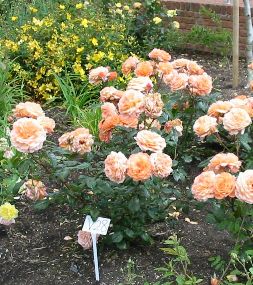 |
In no case should in the spring when planting roses add fresh manure or bird droppings. For young seedlings, it is simply disastrous. These organic fertilizers are best given to plants in liquid form. |
Roses need different nutrients at different times of the season, so we have to correlate the fertilizing with growth cycles. How to properly and how to feed the rose, so that they look really kingly.
It is necessary to feed the roses in time for pomp and rapid growth in the garden ...
As a rule, in the spring she needs nitrogen fertilizers for growth, during the flowering period she needs potassium. During the entire growing season - phosphorus, iron, magnesium, boron, manganese. Let us consider in more detail all periods of fertilizing for garden roses.
The first most important point is planting fertilizer.
There is a widespread belief that you need to fertilize directly in the hole before planting roses. This is not entirely correct. Of course, the soil should be fertilized, but if you apply top dressing directly to the planting hole, a rather aggressive environment is created there and the young roots simply cannot cope with it.
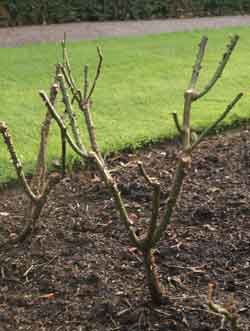 The soil on the plot for planting roses must be prepared in advance. To do this, organic fertilizer is best, well-rotted manure, rich compost, peat. Heavy soil can be mixed with sand and organic matter; we put some clay and organic matter in the sandy soil.
The soil on the plot for planting roses must be prepared in advance. To do this, organic fertilizer is best, well-rotted manure, rich compost, peat. Heavy soil can be mixed with sand and organic matter; we put some clay and organic matter in the sandy soil.
Not bad to add a few ash, burnt from tree crops. Besides the fact that it is a good decontaminant, preventing the formation of rot and wounds, ash has a rich set of useful substances.
All components of the fertilizer carefully lay out on the proposed site, then dig deeply, well mixed together with the ground to the bottom.
If the pit is well filled with all the necessary nutrients, then roses in the first year of planting do not feed. They form new tender roots that are easy to burn.
If the pit was not prepared, the spring in the spring is fed only with organic substances and the solution is made weaker. Meanwhile, young roses can be fed with growth stimulants, such as sodium humate. For a safe wintering at the end of the summer, phosphorus and potassium will be needed.
The next important period for feeding is spring ...
In spring, shoots begin to grow actively, especially after pruning, flowers develop, the buds are tied, and as never before, a rose requires nutrients. It is best to feed with phosphate and nitrogen fertilizers in the spring.
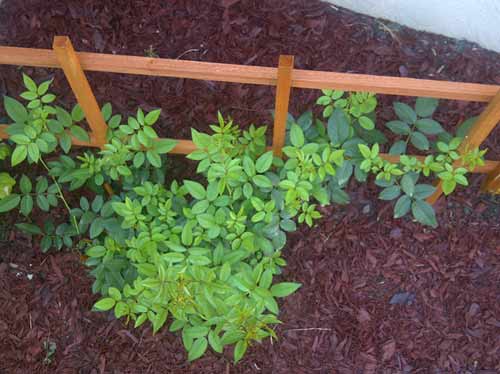
The source of nitrogen is ammonium nitrate, carbamide or urea, liquid organics. Double superphosphate, superphosphate, ammophos - are the source of phosphorus, which contributes to the formation of strong shoots, intensity and quality of flowering. Growth stimulants, sodium humate - they are used as an addition to the basic feeding.
It should be borne in mind that superphosphate contains some nitrogen and if you fertilize together, then urea should be slightly reduced. Phosphorus (superphosphate) is introduced from May to September.
We make a small circle around the rose bush, retreating 10-15 cm, a little farther than its root system ends. The required amount, approximately 10 grams of each fertilizer, is scattered throughout the entire near-stem circle (well). Once the dressings have been added, they need to be gently mixed with the ground. Cover up the hole accordingly.
Gradually dissolving in water, precipitation, watering, this fertilizer will act beneficially. The rose begins to grow actively, plant buds, it is good to gain green mass, to develop new shoots and twigs.
Since the main bait of the plant is made in the spring, it is good to combine mineral fertilizers with rotted manure, compost, at the same time spreading it over the hole. Thus, your plant will receive all the necessary set of useful elements.
Effectively use complex fertilizers ...
For those who doubt that the plant will receive the entire set of necessary micronutrients, the complex mineral supplements for roses are specially produced. In the spring, they are very good to fertilize plants, having previously read the composition.
For example, Kristallin, Kemira (spring) will do. We bring it in liquid (1 tbsp. Per 10 liters of water) or dry (40 grams per 1 sq. M.).
When purchasing any complex fertilizers, one should pay attention not so much to the label, but to the composition, marked (spring or autumn).
For roses in spring, an equal percentage combination of nitrogen, phosphorus and potassium is better. If phosphorus predominates in the composition, it is permissible for roses, since this element contributes to the growth of the root system and abundant flowering.
If an element that is currently unacceptable (potassium) prevails in the composition, then it is better to choose another fertilizer with a high nitrogen content for spring dressing.
The use of dressings at the time of budding and flowering.
Very actively consumes nutrients when the rose blooms, and she needs a lot. But during this period, the emphasis is not on nitrogen. From nitrogen fertilizers, new shoots grow and by the winter they do not have time to form, which is why they freeze in winter.
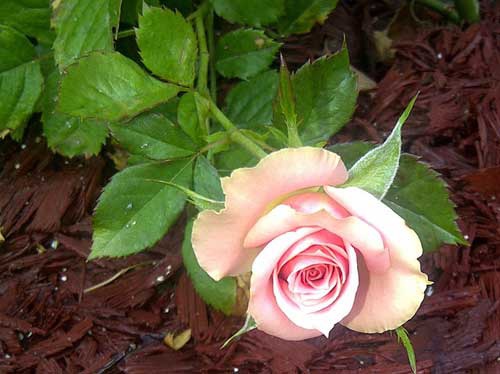
More use of potassium - potassium nitrate, potash salt, potassium sulfate without chlorine (potassium sulfate), potassium chloride. Such feeding is necessary for roses in the period of their budding and flowering, as well as in preparation for winter.
With a lack of potassium, the plants fall ill, therefore, potassium phosphate supplements are recommended for prophylaxis (100 grams of superphosphate plus 30 grams of potassium sulfate per 10 liters of water). Potassium, together with phosphorus, affect the abundance of flowering and even color. Especially good to feed the roses during budding.
Fertilizer can be applied in the near-stem circle (well) and sprayed, doing foliar feeding in the intervals between the main ones. Choose an overcast day or evening when the sun sets.
Toward the fall, so that the rose can prepare for winter and the shoots matured well, so that the root system is sufficiently developed, we feed the plant with phosphorus and potassium. At the end of the summer we exclude nitrogen from the dressings.
On the manure, the rose literally blooms.
The most delicious fertilizer for garden roses is of course rotted manure, good compost, herbal infusions, peat. All these organic dressings perfectly affect the development of roses and can be used in any period.
Organics are used as mulching, in the spring they are placed near the bushes. This will simultaneously protect the land from the emergence of weeds, serve as a source of food and enrich the soil with humus, improve its composition.
Organic matter improves the absorption of minerals and is best combined. It is useful after each mineral dressing to pour the roses with the addition of organic matter.
All fertilizers are applied in liquid form (about 3-4 liters per bush). Before feeding the garden rose, the ground must be watered.
Dry dressing of roses is possible only after abundant watering. You can not pour into the center of the bush, you need to retreat 10-15 cm.
Do not forget about loosening the soil, mulching with peat (5-7 cm) in the autumn, after spring or summer pruning.
In addition to organic fertilizers for roses, such as compost, humus, rotted foliage, plants also need mineral dressings. They consist of essential substances for planting, providing intensive growth, development of the root system and affecting the general health of the bushes. The names of the best fertilizers for roses, as well as information on their use, you will find below.
Mineral fertilizers for roses: intensive growth and development of roots
Roses have a good "appetite." Mineral and organic dressings for roses are essential for optimal growth and development.
Mineral fertilizers should contain:nitrogen, phosphorus, potassium and magnesium.
Nitrogen. Nitrogen stimulates the growth of powerful new shoots with beautiful dark - green foliage, so it is made at the beginning of the season. In the fall, roses do not feed with nitrogen, otherwise young tender shoots grown for winter will die at the very first frost. It is best to apply nitrogen fertilizer immediately after pruning roses, that is, in April - May. If necessary, fertilizing with nitrogen can be repeated at the end of the first wave of flowering.
Nitrogen is intensively consumed during the growth of shoots and leaves. Its deficiency causes yellowing, their grinding, and sometimes the appearance of brown spots. Poor flowering and premature leaf fall will complete the symptoms of nitrogen starvation. And with an excess of nitrogen there is a violent growth of shoots with elongated internodes.
Phosphorus. Phosphorus plants are necessary for the development of new roots, the formation of buds, flowers. Considering that superphosphate acts slowly, for its maximum effect it is better to bring it into the soil when planting roses.
Phosphorus is consumed during the entire growing season. Its deficiency delays flowering, and excess - ages plants.
Potassium. Potassium plays a big role in the health of roses. The lack of it reduces the resistance of plants. This element is brought under the rose in the form of potassium sulfate in early July. From potash fertilizers for roses, choose fertilizers with magnesium content - another important element for roses (potassium mag or potassium magnesia). Yellow leaves with green veins are a sign of magnesium deficiency.
Fertilizing fertilizer for roses alternate with organic fertilizing necessary.
Organic fertilizers for roses do not contain mineral salts. They consist of rotted waste of animal or vegetable origin. The effect of such fertilizers is based not only on the supply of nutrients to plants, but also on the activation of biological processes in the soil and thereby enriching it with humus. Organic fertilizers must first interact with soil microorganisms and be brought into a form that can be better absorbed by plants. Therefore, unlike mineral fertilizers, which are usually very quickly absorbed, it takes time to assimilate organic fertilizers.
Organic fertilizer for roses: a source of nutrients
Organic fertilizers are applied in larger quantities than mineral (up to one bucket per bush). But this source of nutrients acts longer.
A good organic fertilizer is not only humus, but also rotted and leafy soil from old forest belts, where top layer of soil is removed for fertilizer up to 10-15 cm. This layer is light and very nutritious, it consists of perennial leaf litter.
Roses need summer foliar dressings with fertilizer solutions (“Kemira Lux”, “Mortar”, “Akvarin”, “Gumat potassium” and other water-soluble compounds alternately) during the summer.
Such fertilizers contain nitrogen, phosphorus, potassium, magnesium and trace elements: boron, copper, iron, manganese, molybdenum, zinc, etc. These substances give not only good growth and development of roses, but also increase their resistance to diseases and injuries.
Foliar fertilization by spraying is carried out in the morning after the dew dries or in the evening with a solution in a concentration of 1 g per 1 l of water.
Special fertilizer for roses with names
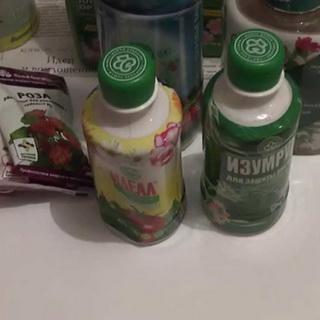 How to feed the roses to ensure their intensive growth?
How to feed the roses to ensure their intensive growth?
Fertile Lake - liquid complex organic fertilizer for roses, containing nitrogen - 1.5%, phosphorus - 1.8%, potassium - 2.3%, humate - 0.15%, trace elements: magnesium, copper, sulfur, iron, boron, manganese molybdenum
This fertilizer is specifically designed to feed everyone. A set of nutrients provides full development, abundant flowering, high decorative colors, and the presence of humate contributes to the most complete absorption of nutrients by the plant.
To use, you need 10 ml (2 teaspoons) of fertilizer diluted in 1 liter of water or 100 ml in 10 l of water. The consumption rates of the working solution are generally accepted and depend on the type and size of the vegetative mass of plants.
Garden flowers are fed with this special fertilizer for roses 1 time in 2 weeks from early spring to the end of August. If in the fall the soil was fertilized, then in early spring you can not feed it.
In the spring-summer period, indoor roses are fed 1 time in 10-15 days, in the period of budding and flowering - 1 time in 7-10 days, in the period of relative rest - 1 time per month.
Proper foliar dressing of roses is carried out with the consumption rate of the working solution from 250 ml to 500 ml and depends on the size of the vegetative mass. An effective combination of both types of dressings. On the eve or after feeding the plants should be watered with clean water.
Remember! Transplanted plants are fed no earlier than 2 weeks.
What else to fertilize roses in the garden and on the windowsill?
Agricola-Aqua - concentrated liquid complex fertilizer, contains nitrogen - 4%, phosphorus - 5%, cadium - 6%, sodium humate - 0.8%, as well as trace elements: boron, copper, zinc, manganese, iron, molybdenum. All macro - and microelements, humic acids are in balanced quantities.
The fertilizer is intended for dressing various types of indoor and garden roses. Stimulates the active growth of plants, flowering, gives flowers a bright color.
For root feeding, 5 ml of the drug is dissolved with stirring in 1 l of water and the plants are watered with this solution. Feeding is repeated after 7-10 days.
When foliar application, 5 ml of the drug is dissolved in 2 liters of water and the plants are sprayed with this solution. This feeding is repeated after 10-14 days.
What fertilizers to feed the roses: "Pocon" and "Gloria"
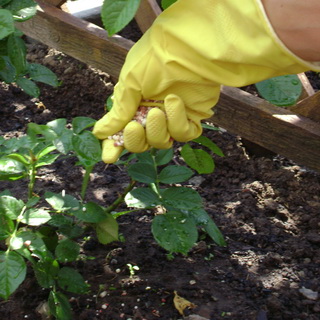 What kind of fertilizer to feed the roses growing in open and closed ground?
What kind of fertilizer to feed the roses growing in open and closed ground?
"Pokon" - highly effective fertilizer for roses of all kinds: simple, bush and climbing, planted in pots, in open ground, and also in vases or containers. Promotes rapid and prolonged (within 2 weeks) intake of batteries.
Guaranteed composition: nitrogen - 6% (2.6% in nitrate, 2.1% in ammonium form and 2.7% in the form of urea), phosphoric acid - 5%, potassium oxide - 5%, trace elements: boron - 0.02%, copper - 0.004%, iron - 0.04%, manganese - 0.02%, molybdenum - 0.002%, zinc - 0.004%; All batteries are water soluble.
Before use, tilt the bottle down the neck and return to its original position. Open the cap, tilt the vial again and dissolve the measured solution (about 10 ml) in 1/2 liter of lukewarm water. Feed plants regularly: 2 times a month during growth and flowering. During the rest of the room, water the fertilizer solution once a month.
"Gloria" - fertilizer for and contains a balanced composition of nutrients and trace elements that are easily absorbed by plants. Regular use of fertilizers stimulates the growth of leaves and stems, an increase in the number and size of flowers, the development of the root system accelerates the onset of flowering and its duration. For the prevention of rose diseases, foliar dressings are most effective.
Before feeding under the root of the plant must be watered with clean water. Then dissolve 2 caps of fertilizer (13 ml) in 1 liter of warm water and water the plants in the usual way.
For foliar application, feed in the morning or evening hours, while avoiding direct sunlight on the leaves to avoid burns. Dilute 2 caps (13 ml) in 1 liter of warm water and evenly spray the plant with a sprayer.
Make the dressing of roses as the phases of growth and development change (plant growth, the beginning of flowering, etc.).
Transplanted plants are fertilized no earlier than 2 weeks after transplantation.
The frequency of fertilizing plants in the room: in the spring - 2 times a month, in the winter - 1 time in 2 months, in the summer - 4 times a month, in the autumn - 1 time per month.
The better to feed the roses: phosphate fertilizer from the Garden of Miracles series
The better to feed the roses for quick rooting of cuttings?
"The Rose" - phosphate fertilizer for roses on the basis of "Biohumus" from the Garden of Miracles series. It has a full range of basic nutrients, g / l, not less than: nitrogen - 5.0; phosphorus - 5.0; potassium - 5.0; humic substances - 1.0, as well as macronutrients.
When using fertilizer for indoor plants (root feeding), 2 caps (8 - 10 ml) are taken for 1 l of water and from March to September, plants are watered with a fertilizer solution every 10-15 days, from October to February - 1 every 3-4 of the week. In open ground, 10 liters of solution for 5 -7m2 plantings.
For foliar (per leaf) dressing, soaking seeds, rooting cuttings take 1 cap (4-5 ml) per liter of water. Seeds and cuttings are soaked for 24 hours. Cuttings set in the solution vertically.
Alternate fertilizing with organic fertilizers. Good results are obtained by watering roses in the garden and greenhouse infusion of mullein.
For 100 liters of water they take a bucket of fresh (no more than daily) mullein, stir and allow the mixture to infuse and ferment for 5-10 days (the duration of the fermentation period depends on the ambient temperature). With the cessation of the appearance of bubbles, the fermented strong infusion is diluted with water at the rate of 1 liter of infusion per 10 liters of irrigation water.
Before applying liquid fertilizer, the soil is watered well with clean water - about 10 liters per 1 m2. After that, around the bush evenly spread liquid fertilizer. When it is absorbed, the soil is loosened and mulched.
Proper fertilization of roses with nitrogen-potassium fertilizer
![]() "Ambulance for roses" - Special soil and fertilizer for roses and other flower plants. Made on the basis of natural components: peat, humus, natural structuring, deoxidizing and fertilizing materials.
"Ambulance for roses" - Special soil and fertilizer for roses and other flower plants. Made on the basis of natural components: peat, humus, natural structuring, deoxidizing and fertilizing materials.
This nitrogen-potassium fertilizer for roses contains a complete balanced set of nutrients, trace elements and growth stimulants, as well as nitrogen - 150 mg, phosphorus - 150 mg and potassium - 500 mg in 1 liter of soil and pH slightly to 5.5-6. ,five.
The soil is fully prepared for cultivation, transplantation and fertilizing.
Properties:
- Creates favorable comfortable conditions for plant growth, contributes to their survival after planting and transplanting.
- It provides plant resistance to stress and disease, increases their immunity, eliminates the negative effects of exposure to plants of poor-quality soil mixtures, fertilizers, remedies, etc.
- When feeding the roses with nitrogen-potassium fertilizers, the decorative properties of the plants are improved, and the roots are reliably protected from drying out and overmoistening.
- Suppresses the development of harmful and contributes to the life of useful soil microflora.
Application rate as top dressing: 1-2 teaspoons for each liter of capacity with a plant. It is distributed evenly over the surface of the soil and gently loosened, then watering is performed. The frequency of fertilizing -1-2 times a month, depending on the state of the plant.
The rose is the queen among the flowers. Such beautiful plants are not difficult to grow, if only you follow certain rules and know some specifics. Continuous timely fertilizer, watering and pruning - these are the main features of flower care. After all, to have roses in the garden is, first of all, to adhere to all these norms.
Soil for flowers
Best of all, light, loamy soil rich in humus, a porous composition of which is freely permeable to water and air, is suitable for good plant formation. Excellent roses grow on fertile soil.
It is much worse if there is sandy and sandy sandy soil on the territory, which is excessively heated in summer, and freezes in the winter period. Such strong temperature drops negatively affect the root system of delicate roses. And so, to change the structure of this land, you can add turf, rotted manure, lime and peat to it.
Roses in the garden will also not develop if clay soils predominate, which accumulate and retain a considerable amount of moisture. Such a soil can be made suitable for growing flowers, if you mix it with humus, sand, peat and compost. 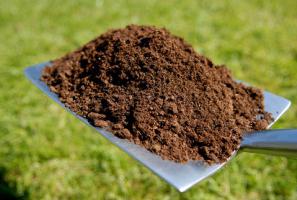
Caring for roses in the garden
These wonderful "creations" of nature are very whimsical to the content of useful elements in the earth. The absence of even one of the necessary substances may affect the formation and appearance of the flower. On the leaves you can see signs of fasting. To avoid such difficulties, plants should be fed every year.
Principles of feeding
Before you figure out what and when you can fertilize flowers, you need to consider the basic conditions for producing top dressing. Here are some rules:
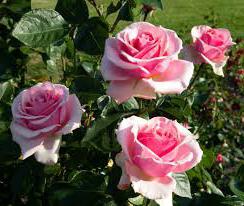
How to feed the roses in the garden
In the first year after planting, there will be enough fertilizer applied to the ground during the planting period. And a special dressing is not needed. But in the following years, fertilizer will need to be added constantly. There are some types of dressings.
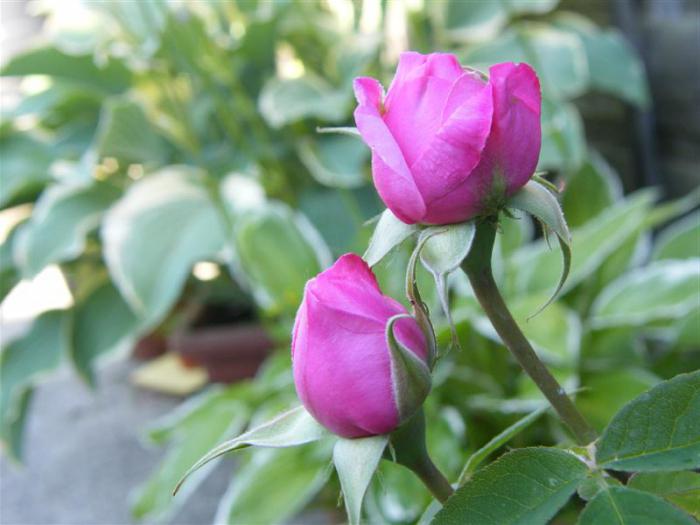
Watering
How to care for roses in the garden? First of all, it is necessary to think about the fact that the soil around the bushes of flowers does not dry out, and all the time was slightly moist. If the soil is light (loose), then drip irrigation can be supplied. Manual plants are watered infrequently, but well (20 l per m2). Water must be poured into the hole in the ground around the bush. It is better not to water the rose petals, especially in hot weather, as this can provoke a thermal burn and the death of young shoots. 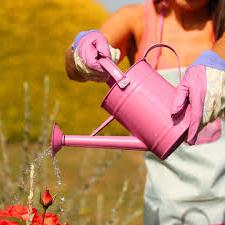
How to prune roses
Unlike other plants, the garden “queen” needs to be cut. Thanks to the removal of useless patients and old processes, new ones will grow - healthy and strong. The cut is made slightly higher than the shoot, 5-7 mm. The procedure is performed in all seasons, except for winter. Only a sharp pruner is used, as the blunt instrument is able to split the stems.
In spring, the rose is cut immediately after blooming. And in the summer they remove the buds that have faded. Cut the spoiled buds between the second and third sheets, in the upper part. Grafted flowers eliminate weeds. Such a process requires some attention. If the "dicky" cut at the same level with the ground, then they will grow even stronger. Uniform removal make from the base, removing the soil from the root collar. Autumn pruning is characterized by shortening the sprouting sprouts and eliminating shoots. 
Protection against diseases and pests
How to care for roses in the garden to keep them healthy? To do this, it is necessary to inspect the bushes more often, and if the first indicators of the disease have appeared, you should immediately start fighting. It is also necessary to perform certain preventive procedures, namely:
- plant plants near flowers with a sharp aroma that repels insects (decorative onions, marigolds, sage);
- from time to time, watering rose bushes with yarrow extract, onion, garlic;
- all leaves destroyed by black spot need to be plucked and burned;
- from mid-summer, bushes with wood ash should be treated;
- it is necessary to monitor the intensity of planting (excessive crowding leads to the appearance of fungal diseases).
How to care for flowers in spring
Spring is the time of year when a lush garden is born. Roses - the basis of its creation. Land under the bushes prepare in advance, that is, in the fall. If it was not possible to prepare soil at this time, then it is possible to make preparation not earlier than a month before planting. To loosen the soil, it will be necessary to dig a planting recess 50x60 cm. The surface fertile layer of the earth is removed, tilted to the side and then dug up.
For the roses to grow well in the garden, add 40 g of magnesia, 400 g of superphosphate, 200 g of ash, 300 g of lime and 400 g of bone meal to 1 m2 of the inner layer of soil. All components need to be properly mixed with the soil, and the top layer of earth to fall asleep in ready pits.
In April, you can gradually remove the shelters of bushes in the daytime, and at night it is better not to touch them. With a significant increase in temperature, the coatings are removed completely. To protect the flowers from night frosts in the spring, you can leave cover of spruce branches or light matter on them. They will save plants from severe sunburn.
Roses in the garden before opening the buds must be treated with 3% Bordeaux mixture. To do this, take on a bucket of water, 300 g of copper sulphate and quicklime. Such treatment will eliminate the maturation of fungal diseases.
